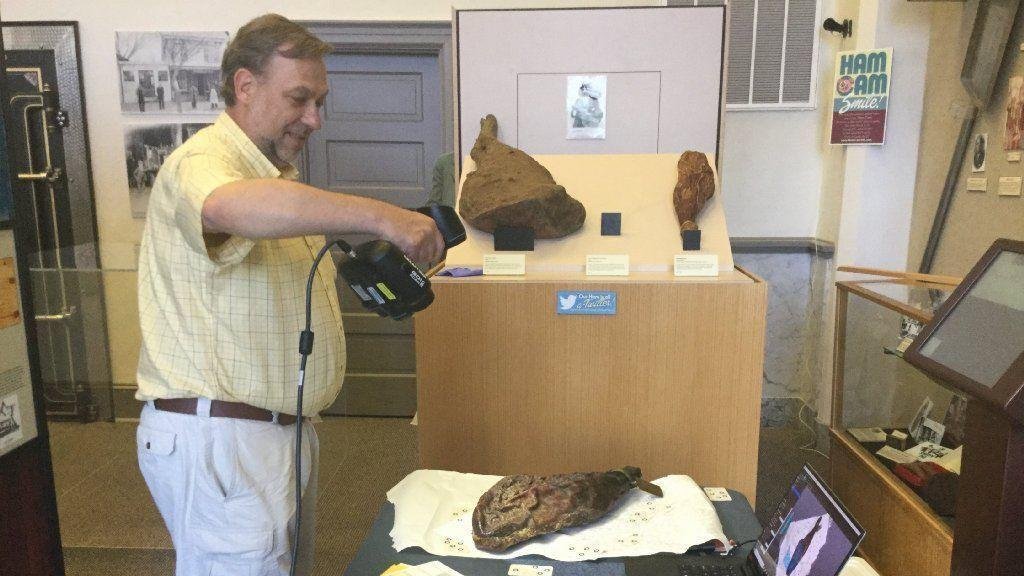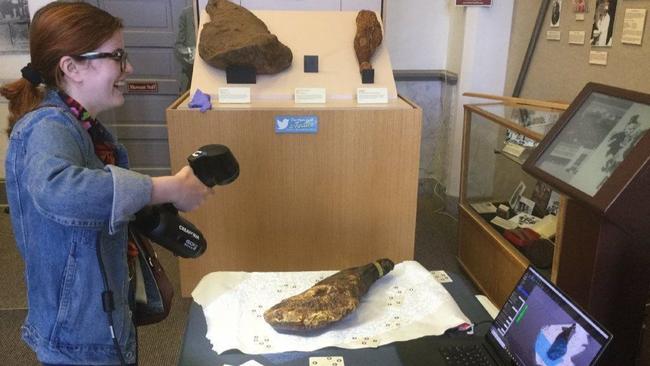The town of Smithfield, Virginia is famous across the United States thanks to one of its more unusual tourist attractions – a 115-year-old ham.
Originally cured in 1902 by the food and beverage company, Gwaltney Foods, the world’s oldest ham will turn 116 this Saturday and received an early birthday present as students from the Virginia Commonwealth University (VCU) 3D printed an identical model.
The ham is housed in the Isle of Wight County Museum and has remains in a glass case for preservation.

Scanning the ham
Led by Bernard Means, Professor of Anthropology at VCU, the 3D printed model of the ham is part of the VCU World Studies department’s Virtual Curation Lab, which focuses on 3D scanning and printing historical and archaeological objects.
Professor Means’ intention was to help to further preserve Smithfield’s prized possession as the 3D model can be passed around and touched by museum-goers while the original ham remains safely in its case.
The 3D printed version is especially beneficial for visually impaired visitors to the museum as they can feel the size and shape of the ham.
VCU students scanned the ham in 20 minutes, which was the second time it has ever been removed from its case – the first instance was also for a 3D scan in 2015.
According to Professor Means, 3D printing a replica of the ham will also help to keep track of how well the ham is preserved. The ham can be scanned again in a few years and compared with previous models to detect any shrinkage or deterioration.
“Scanning the ham is also a way for more of the world to see it if people don’t have the means to visit the museum,” said Professor Means as the 3D scan can now be accessed on the SketchFab online platform.

3D models and historical preservation
3D technologies have previously been used to preserve and historical landmarks, and artifacts all across the world.
In 2017, the Dubai Future Foundation (DFF) began 3D printing a variety of middle eastern artifacts in an effort to preserve the cultural heritage and archaeological sites of the region that were destroyed after the Islamic State in Iraq and Syria (ISIS) attacks.
Prior to this, the Italian 3D printing company DWS aimed to preserve the town of Amatrice, Italy using 3D printed models. This project arose after the devastating earthquake which wreaked havoc across central Italy in 2016.
Catch up with the latest in 3D printing by subscribing to the 3D Printing Industry newsletter. Also, follow us on Twitter, and like us on Facebook.
Looking for a change of pace or seeking new talent? Search and post 3D Printing Jobs for opportunities and new talent across engineering, marketing, sales and more.
Featured image shows 3D scan of the World’s Oldest Ham. Image via SketchFab.

